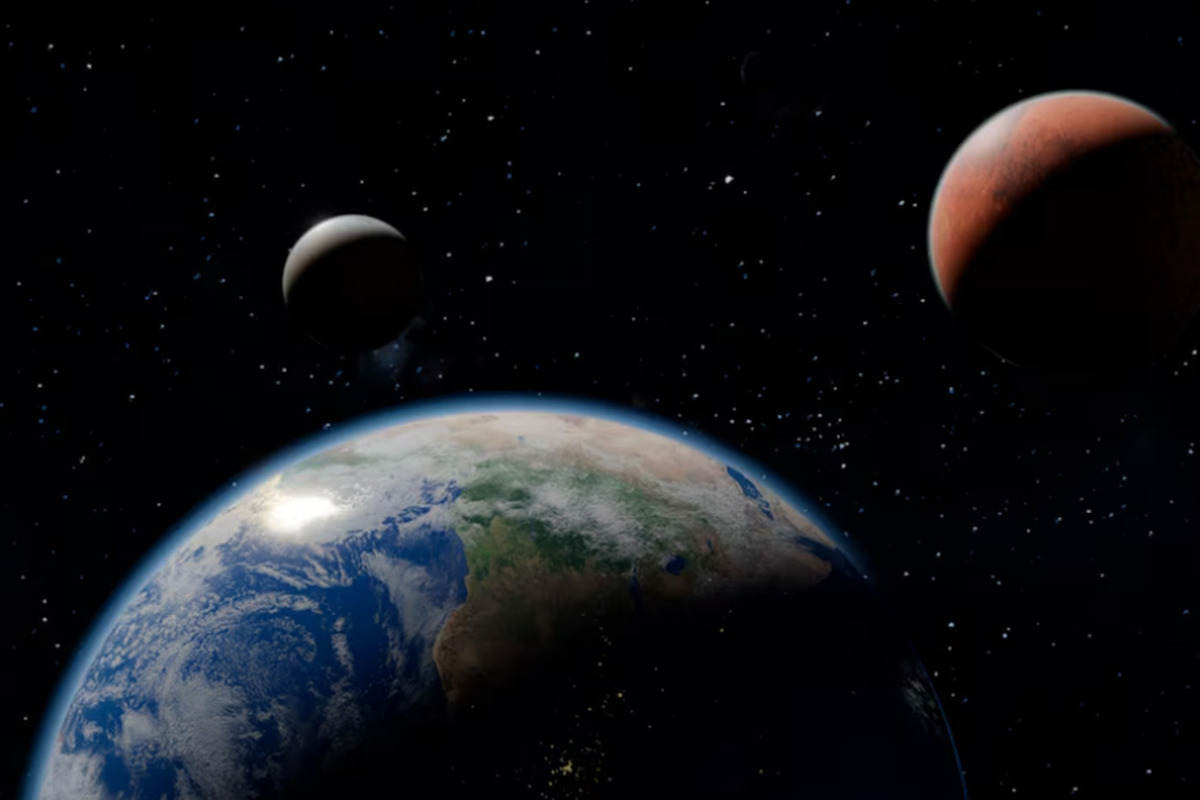“The other end of the world”: astronomers predicted the Earth will turn into a white dwarf
[ad_1]

A new study sheds light on a white dwarf star that is the likely destroyer of our solar system. The enormous gravity of these dense stars, which have burned all their fuel, tears smaller planetary bodies apart.
It’s the end of the world, but not quite as we know it, writes The Guardian. Scientists from the University of Warwick and other scientific institutions have studied the impact of white dwarfs – end-of-life stars that have used up all their fuel – on planetary systems such as our own solar system.
As asteroids, moons and planets approach white dwarfs, their enormous gravity tears these small planetary bodies into smaller and smaller pieces that continue to collide, eventually turning them into dust.
While the researchers said Earth will likely be consumed by our host star, the Sun, before becoming a white dwarf, the rest of our solar system, including asteroids between Mars and Jupiter, as well as Jupiter’s moons, could eventually be destroyed by the Sun in the form of a white star.
Dr Amornrat Aungwerojwit from Naresuan University in Thailand, who led the study, said: “Previous research has shown that when asteroids, moons and planets approach white dwarfs, the enormous gravity of these stars tears these small planetary bodies into ever smaller pieces.”
Collisions between these particles eventually turn them into dust, which eventually falls into the white dwarf, allowing researchers to determine what type of material the original planetary bodies were made of.
Professor Boris Ganzik, from the Department of Physics at the University of Warwick, said: “The simple fact that we can detect debris from asteroids, possibly moons or even planets, whizzing around a white dwarf every couple of hours is mind-boggling, but our research shows that the behavior of these systems can be changed, can evolve quickly, within a few years. Although we believe we are on the right track in our research, the fate of these systems is much more complex than we could have imagined.”
In the new study, scientists spent 17 years studying changes in the brightness of stars, shedding light on how these bodies collapse. They focused on three different white dwarfs that behaved very differently.
The first white dwarf studied, known as ZTF J0328–1219, seemed stable and “well-behaved” over the past few years, but the authors found evidence of a major catastrophic event around 2010.
Another star, known as ZTF J0923+4236, has been shown to dim unevenly every couple of months and exhibit chaotic variability for a few minutes during these fainter states before flaring up again.
In 2015, the Massachusetts Institute of Technology (MIT) showed that the behavior of the third white dwarf analyzed – WD 1145+017 – was close to theoretical predictions, with huge differences in the number, shape and depth of transits. Surprisingly, in this latest study, the transits have now completely disappeared.
“Overall, the system is gradually becoming brighter as dust from the catastrophic impacts in 2015 clears,” Ganzik said. “The unpredictable nature of these transits can drive astronomers crazy—one minute they’re there, and the next they’re gone. And that points to the chaotic environment they find themselves in.”
Asked about the fate of our own solar system, Boris Ganzik said: “The sad news is that the Earth is likely to be swallowed up by the expanding sun before becoming a white dwarf. As for the rest of the solar system, some asteroids located between Mars and Jupiter, and perhaps some of Jupiter’s moons, may be dislodged and pass close enough to the white dwarf to undergo the grinding process that we investigated.”
The research was published in the journal Monthly Notices of the Royal Astronomical Society (MNRAS).
[ad_2]
Source link








